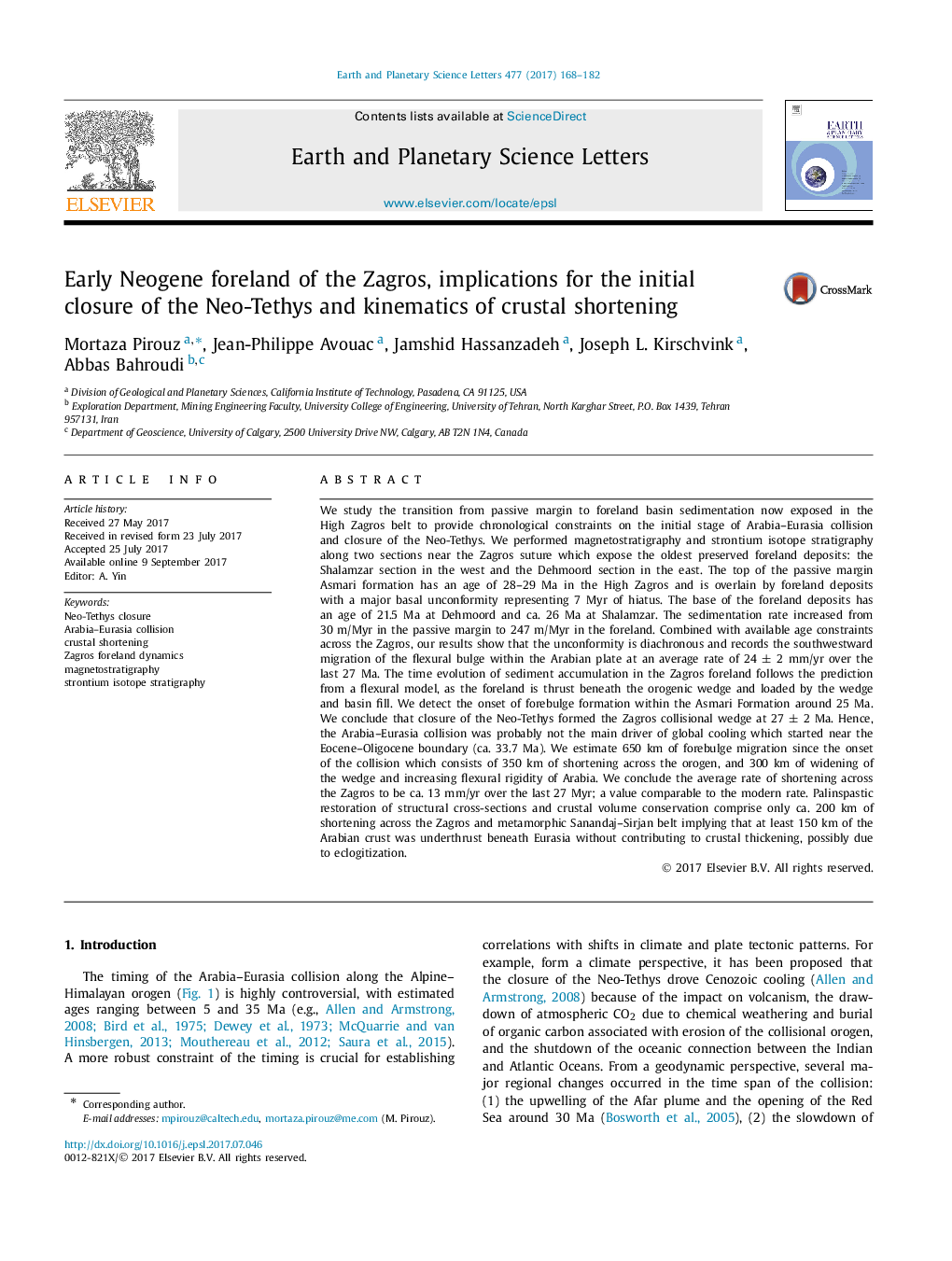| کد مقاله | کد نشریه | سال انتشار | مقاله انگلیسی | نسخه تمام متن |
|---|---|---|---|---|
| 5779542 | 1634679 | 2017 | 15 صفحه PDF | دانلود رایگان |
- Zagros collision and closure of the Neo-Tethys Ocean is dated at 27 ± 2 Ma.
- The foreland sediments migrated southward over the forebulge unconformity at ca. 25 mm/yr.
- The shortening rate across the Zagros is estimated to 13 mm/yr since the onset of collision.
- Eocene-Oligocene global cooling was probably not driven by the Arabia-Eurasia collision.
- About 150 km of underthrust Arabia was eclogitized and did not contribute to the crustal thickening.
We study the transition from passive margin to foreland basin sedimentation now exposed in the High Zagros belt to provide chronological constraints on the initial stage of Arabia-Eurasia collision and closure of the Neo-Tethys. We performed magnetostratigraphy and strontium isotope stratigraphy along two sections near the Zagros suture which expose the oldest preserved foreland deposits: the Shalamzar section in the west and the Dehmoord section in the east. The top of the passive margin Asmari formation has an age of 28-29 Ma in the High Zagros and is overlain by foreland deposits with a major basal unconformity representing 7 Myr of hiatus. The base of the foreland deposits has an age of 21.5 Ma at Dehmoord and ca. 26 Ma at Shalamzar. The sedimentation rate increased from 30 m/Myr in the passive margin to 247 m/Myr in the foreland. Combined with available age constraints across the Zagros, our results show that the unconformity is diachronous and records the southwestward migration of the flexural bulge within the Arabian plate at an average rate of 24 ± 2 mm/yr over the last 27 Ma. The time evolution of sediment accumulation in the Zagros foreland follows the prediction from a flexural model, as the foreland is thrust beneath the orogenic wedge and loaded by the wedge and basin fill. We detect the onset of forebulge formation within the Asmari Formation around 25 Ma. We conclude that closure of the Neo-Tethys formed the Zagros collisional wedge at 27 ± 2 Ma. Hence, the Arabia-Eurasia collision was probably not the main driver of global cooling which started near the Eocene-Oligocene boundary (ca. 33.7 Ma). We estimate 650 km of forebulge migration since the onset of the collision which consists of 350 km of shortening across the orogen, and 300 km of widening of the wedge and increasing flexural rigidity of Arabia. We conclude the average rate of shortening across the Zagros to be ca. 13 mm/yr over the last 27 Myr; a value comparable to the modern rate. Palinspastic restoration of structural cross-sections and crustal volume conservation comprise only ca. 200 km of shortening across the Zagros and metamorphic Sanandaj-Sirjan belt implying that at least 150 km of the Arabian crust was underthrust beneath Eurasia without contributing to crustal thickening, possibly due to eclogitization.
87
Journal: Earth and Planetary Science Letters - Volume 477, 1 November 2017, Pages 168-182
